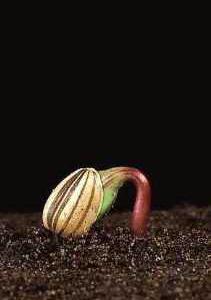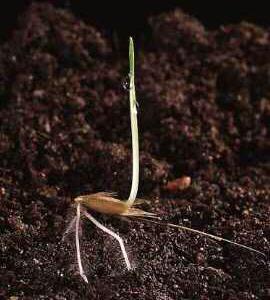|
|
Germination of seeds |

|
|
Germination of seeds |

Seeds are very remarkable. Laying dormant (or asleep) inside the seed is an embryo plant. Packed up in the seed with the embryo is enough stored chemical energy to power the young seedling until it can capture its own energy from the sun by the process of photosynthesis.
The timing of the germination (which is
when the seed starts changing into a young plant) is
important to the success of the young seedling. For
instance, milkweed seeds that are produced in late summer
and autumn are carried on the wind, away from the parent
plant. They fall to earth in all sorts of environments. If
the seed goes ahead and germinates immediately, the young
milkweed plant will not be able to produce flowers and seeds
before winter. Milkweed seeds actually don't germinate
until they have experienced long periods of low
temperatures. In the spring when the soil is moist and the
soil temperature is warm enough a new generation of milkweed
to begin. The seed has to somehow respond to signals in its
environment in order to germinate at the right time of the
year. Many environmental factors can affect
seed germination. How much light there is, how long the days
or nights are, water, gravity, temperature, genetics, oxygen
availability, seed condition or age, - all these and other
environmental conditions can affect seed
germination. In order to germinate and break dormancy
a seed has to absorb quite a bit of water. In nature seeds
absorb this water from the soil. As the seed absorbs water,
it begins to put up a shoot which appears above the ground,
and at the same time, put down roots which will continue to
feed it as it grows. The seed at the right is an oat seed, and
you can see both the shoot growing upwards, and the roots
beginning to grow down into the soil.

